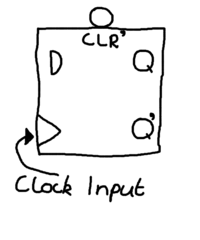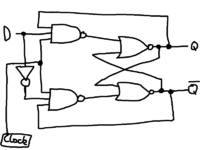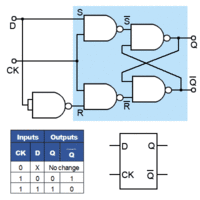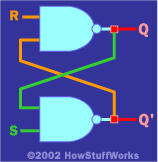Flip Flops
Contents
What is a flip flop
A flip-flop is used to store binary data, and is a simple latching circuit. When a value is set on the flip flop, the value is retained even when the input is switched off. This is how you can store a single bit of data in a computers memory.
Basic (SR) Flip Flops
Basic flip flops are created using two NAND gates cross couples as seen in the image.
Problems with basic (SR) flip flops
D and T type Flip Flops
A flip flop has two inputs. One input is a control input. For a D flip flop, the control input is labelled D. For a T flip flop, the control input is labelled T. The other input is a clock input, labelled either with a triangle or CK. When a clock is drawn with a triangle like the ones below, these represent a positive-edge triggered clock, meaning that these can only change state when the clocks cycle is on a positive value i.e 1. When the clock is not on a positive value the bit stored within the flip flop is held i.e doesn't change.

 200px Logic circuit for a T-Flip Flop
200px Logic circuit for a T-Flip Flop

